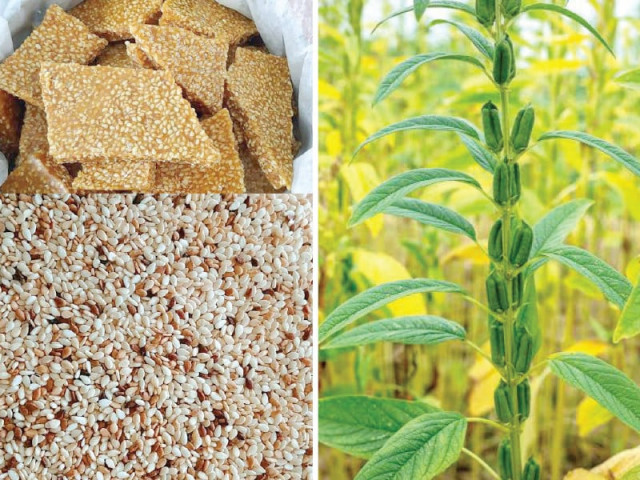Sesame: a vital oilseed crop of Punjab
Seeds contain 50% edible oil and 22% good quality protein.

Sesame is an important short-duration oilseed crop cultivated in Punjab for centuries. Its seeds contain more than 50% edible oil and about 22% good quality protein.
According to health experts, its properties are very similar to olive oil, which is why it is the best nutrition for humans and livestock.
Dr Hafiz Salim Akhtar Anjum says that sesame oil is used in pharmaceuticals, and dry cleaners, as well as in high-end soaps, perfumes, and fast food bakery products. Due to these characteristics, domestic and international demand for sesame seeds is increasing. The cost of cultivation of sesame seeds is low and the income is high.
Sajid Hussain, a local leader of the All Pakistan Kisan itehad, said sesame cultivation time in Pakistan is from June 1 to July 15. Light sandy and medium loam soil with good water absorption capacity is most suitable for sesame cultivation. The fertile and lowland is not suitable for this cultivation. The crop is cultivated over about 130,000 acres in the country.
According to farmer Haji Muhammad Aslam, at first, the land is prepared by ploughing two or three times and preparing the land well. The land should be level which is very important to avoid the ill effects of water shortage.
Sesame cultivation is done by tractor drill, usually in rows. The distance between rows is 45cm and the seed is sown to a depth of 2cm.
To speed up the growth of the crop, clean and healthy seeds are sown at 2kg per acre in suitable land. Along with this, one sack of DAP and half a sack of urea fertilizer are used at the time of sowing. A week after sowing, the germination of the seed is complete.
According to farmer Razak Hussain, sesame crop generally requires three to four times irrigation at 15 to 20-day intervals. The sesame harvest period is 100 to 120 days, after which harvesting begins. Sesame has an average yield of 15 maunds per acre. According to agronomist Muhammad Arshad Jutt, several diseases attack the sesame crop, which causes a decrease in production. Healthy and treated seeds should be used along with good pesticide spray to ensure a good sesame crop to avoid these diseases.
According to Dr Anjum, sesame seeds are called the meat of the poor. People who don't eat meat should use sesame seeds. The seeds are a rich source of vitamins. All the essential building blocks of the human body are present. It is very useful for heart diseases, skin diseases, high blood pressure, stroke, lung and stomach diseases. The use of sesame seeds is useful in improving the complexion as well as lengthening and darkening the hair. For children who wet the bed while sleeping, sesame seeds are very beneficial as they strengthen the bladder.
Sesame is widely used in sweets. Sesame laddoos, reoris and Gichak are popular souvenirs, said a baker, Muhammad Shehzad



















COMMENTS
Comments are moderated and generally will be posted if they are on-topic and not abusive.
For more information, please see our Comments FAQ